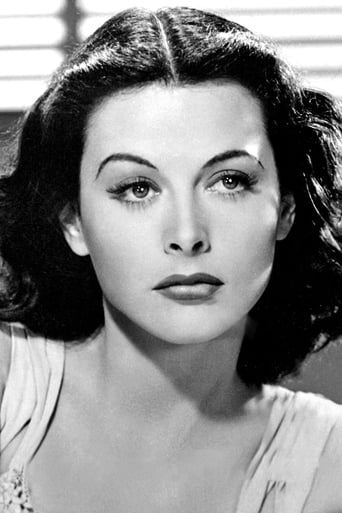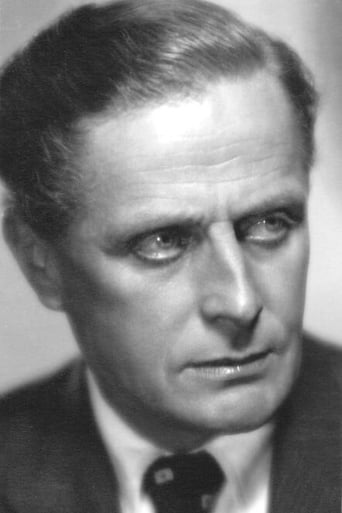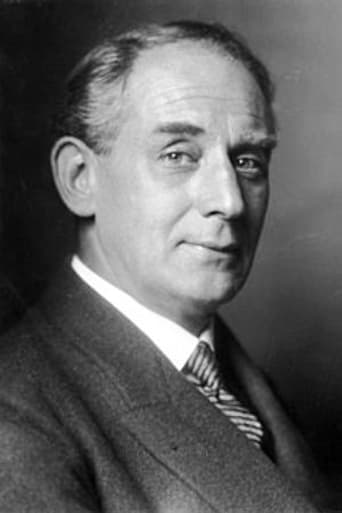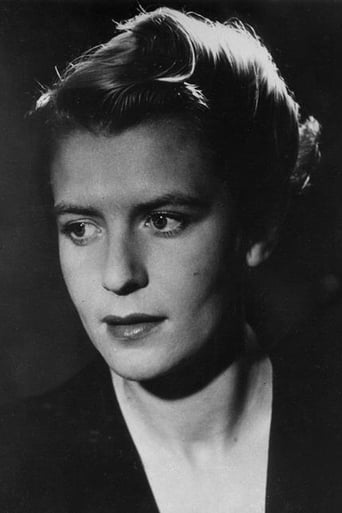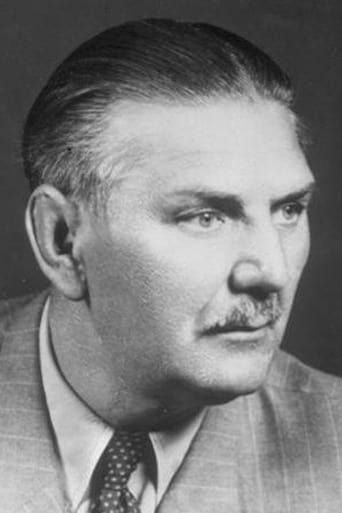GamerTab
That was an excellent one.
Steineded
How sad is this?
Numerootno
A story that's too fascinating to pass by...
moonspinner55
Hedy Lemarr shot to prominence in this scandalous Czech production filmed when her name was still Hedy Kiesler. It's a relatively simple and plodding extramarital affair between an engineer and a newly-married young woman whose husband has turned cold towards her (though we are never told why). Director Gustav Machatý has a terrific eye for details and little bits of business (such as the husband crushing a fly while reading his newspaper), yet the filmmaker is unable to use his imagery to propel the story, which takes forever to get going. The elongated opening--with the blushing, seemingly-happy newlyweds arriving to their honeymoon suite--is so coy, it puts the audience in the uncomfortable position of expecting (or, indeed, hoping) something lascivious will happen. The girl's background as the daughter of a horse rancher is sketchily drawn, and her initial meeting with smitten hunk Aribert Mog has the awkward feel of silent-movie melodrama. Still, Lamarr is quite beautiful (especially when tousled), and she has a touching early moment wistfully watching lovers on the dance-floor. "Ecstasy" clearly isn't much of a movie, but at least it gave us one of the cinema's most attractive leading ladies. * from ****
Charlot47
Reviewers have struggled with the lack of dialogue and the lavish use of symbolism, both of which force you to interpret the film as a visual experience. Most seem baffled, embarrassed or bored by the long wordless finale. Consider what has happened to the principals: the husband Emil, after failing to drive into a train on a level crossing, has shot himself; the divorced wife Eva, after failing to throw herself under a train like Anna Karenina, has disappeared; but her lover, the surveyor Adam, still has his road to build. So it's back to the job for him and his team, stripped to the waist under the summer sun. We get a celebration of physical work in the open: breaking ground with picks and drills, moving spoil, sawing timber. Even the respectably covered gypsy woman with her children is chipping stone. After an introverted and tragic story of thwarted passion among the rich, here are ordinary people doing an honest day's labour.And the final shot of a happy and sexy Eva with a baby? If it's meant to be real, or just Adam's fantasy, we're left to guess. But isn't it a celebration of fulfilment and of new life?Also, isn't the end a reprise of the old story in the book of Genesis? After their disobedience, Adam and Eve are both cursed. He must toil at the ground to make his living and sweat before he can eat. She will suffer the pangs of childbirth, but will still want to be with her man.
L. Denis Brown
I cannot comment on this film without discussing its significance to me personally. As a child bad health prevented me from ever going to a cinema. I first encountered movies at the end of WWII through Roger Manvilles splendid Penguin book "Film", which brought me so much pleasure as my health began to improve that I wish I could buy another copy to re-read today. My introduction to many classics films such as The Battleship Potemkin, Drifters (Grierson's magnificent documentary), Metropolis, The Cabinet of Dr Caligari, and Ecstasy; came first through this book and later at my University Art-house cinema. Ecstasy had incurred the wrath of the Vatican, for condoning Eva's desertion of Emil, her subsequent divorce, and the brief swim she took in the buff, but Roger Manville ignored these trivial matters and discussed the film as a triumphant, outstandingly beautiful, visual paean to love - a view echoed by many IMDb users. A very lonely young man, when I saw it, I willingly concurred. No further opportunity to see Ecstasy arose until the introduction of home videos - by then it had become a treasured memory not to be disturbed. Quite recently I finally added Ecstasy to my home video collection and found this assessment very superficial. Ecstasy is much more of a parable on the continuity of human existence, against which individual lives are insignificant - perhaps a tribute to what Bernard Shaw in his aggressively agnostic writings used to term 'The Lifeforce'. Ecstasy portrays a young bride marrying a middle aged man whose sex urge is no longer strong. Disappointed, she returns home and divorces him. Soon after she experiences a strong mutual attraction to a young virile man she meets whilst out horse riding. She makes love for the first time and it is an overwhelming experience. Her former husband cannot face rejection and gives the young man a lift in his car intending that a passing train will kill them both on a level crossing. But the train stops in time and the apparently ill driver is taken to recuperate at a nearby hotel where he later commits suicide by shooting himself. After these exciting climacteric sequences, a bland, predictable and almost inevitable ending emphasises that whilst individual human lives exhibit both joy and tragedy, collectively life continues to carry us all forward in its stream and only through contributing to this stream can we be truly happy. This story is trite, the acting is no more than adequate; and normally such a film would have disappeared into the garbage, as did most of its contemporaries, long ago. What has given Ecstasy its classic status is exceptional cinematography, a continuous lyrical score and very careful loving direction, coupled with something fortuitous but in cinematographic terms very important - it appeared just after the introduction of sound and was probably planned as a silent film. It is sub-titled and its Director has exploited the impact of brief verbal sequences accompanying some sub-titles, and occasionally breaking into the score which so lovingly carries the film forward. This makes it not only almost unique but extremely rewarding to watch. The parable in the tale is stressed continuously but so subtly that only when reflecting after viewing does one become fully aware of it. For example, the names - Eva and Adam; the obsessive behavior of Emil on his wedding night which shows that triviata have become the most important thing in his life and predicate his eventual suicide since he has no adequate purpose to sustain him; the ongoing series of beautiful sequences showing erotic imagery (a bee pollinating a flower, a key entering a lock, a breaking necklace during Eva's virginal lovemaking sequence with Adam, etc.); and the final post-suicide sequences which could have been filmed in many different ways but serve to extol the importance to individuals of performing some type of work that contributes positively to Society, as well as of creating new life to sustain this society after we ourselves pass on. As a 1933 film I would rate this at 9 - even comparing it with contemporary works I would not reduce this below 8. For me the film will always remain a "must see", (although you may feel that my background remarks above indicate some bias in this judgment). Unfortunately in North America contemporary assessments of this film have been distorted by the extreme 1930's reaction to Hedy Kiesler's very brief and relatively unimportant nude scene which she had difficulty living down in Hollywood (some critics, who have clearly not seen such classic films as Hypocrites, Hula, Back to God's Country, Bird of Paradise or some of the early works of D.W. Griffiths and C.B. deMille, have even erroneously referred to this as the first appearance of a nude actress in a feature film). This scene was probably part of the original novel, and the film would have been very little different if the Director had chosen to rewrite it.Two further thoughts; firstly this is a Czech film, released there in 1933. Its final message about hard work generating positive benefits for society must have seemed very superficial to its viewers when a few years later their country became the first victim of Nazi oppression and was virtually destroyed for at least two generations (I do not remember these sequences being screened just after the war when I first saw this film - were they removed from the copy I saw then?). Secondly for me its main message today is that things of real beauty are often very transitory even though their memory may stay with one for a lifetime. We should all be thankful that today some of them can be captured on camera and viewed again at our convenience.
Robert J. Maxwell
There's nothing new about the story. Naive young Emma Bovary married older man, finds he's not very exciting, leaves older man, finds younger man, drops mescaline, smokes rainbow, paints political slogans on body, goes back to older man -- no, he dies, that's right, of a "self-inflicted gunshot wound" -- nibbles madeleine cake dipped in tea, broods over lost love who dumped her for cheerleader, meets movie mogul, is morphed into Hedy Lamarr, is busted for shoplifting -- and the rest you know.I hadn't seen this for a generation. The last print I saw was chopped to pieces and was a lousy print. This one, which appeared on Turner Classic Movies, is about as good as we're likely to get now. And it's not bad either.Definitely a chick flick though, rather like "Lady Chatterly's Lover" or any one of a number of stories with similar themes. The horny young man is not named Count Vronsky but he might as well be.The director, whom I'd never heard of, does the best he can with this slightly shapeless script. I don't mean the nude scenes which by today's standards are dismissible. I mean the way he allows Hedy Keisler turn away from the camera and hide her face behind a door jamb when she must register shock and guilt. And -- good grief -- what he does with symbolism! When the young couple are developing the hots for each other -- let me think -- he's got a bee pollinating a flower, a male horse huffing and puffing around a mare in estrus, a rising wind, a burning lantern -- please, I'm trying to remember. Yes, when she is suddenly rendered virgo no-longer intacta, her pearl necklace breaks and the pearls roll around on the floor.The old guy knows who the young guy is and gives him a ride in his six-cylinder convertible. The car picks up speed in a truly excitingly photographed and very tense scene as the old driver is deciding whether or not to kill them both by running into a train. He stops short, at the same time as the locomotive, and the locomotive boiler releases its pressure in a plume of steam and a terrifyingly exhausted hiss.Not much acting is called for, this being on the cusp of talking and silent movies at that time and in that place. Hedy Lamarr was only twenty and a little plumper and sexier than we are used to seeing her, though that description doesn't extend to her bosom, kind of a nice touch.It's worth seeing. It's not just an historical curiosity. If you're in the right mood you'll be caught up in the story, sad as it is.


